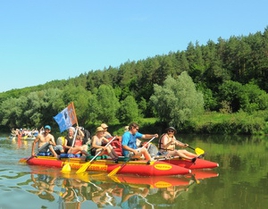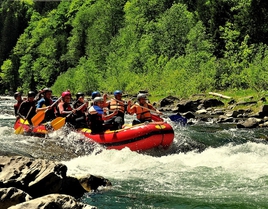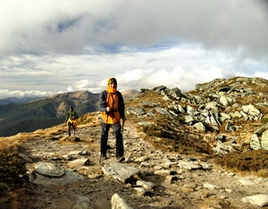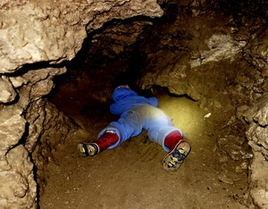The Gostri Govdy cave
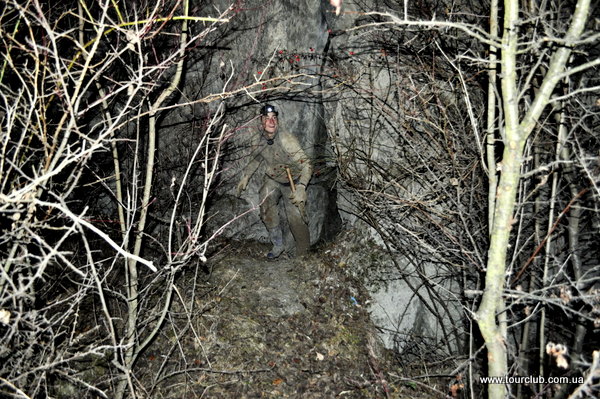
The cave Gostri Govdy is located in Podilsko-Bukovynska karstic area, in the center of Dniestersky canyon, on the right bank of Dniester. The entrance is 90m above the level of the river, between the town Kostryzhivka and the village Zvyniachyn of Zastavna district, Chernivtsi region, in forn of Zalishchyky in Ternopil region.Locality, where the entrance situates, befor the World War was called Gostri Govdy - it was left since the Austrian-Hungarian domination in Bukovyna in the beginning of XX century. "Govdy" means "kliffs, hills", and "gostri" - "sharp". From that place beautiful landscapes can be viewed over the Dniester river, Kostryzhivka town, Zalishchyky, Dobrivliany village and the monastery.
In 40-50 at Gostri Govdy gypsum mining in quarry was started by Kostryzhivsky Factory of Construction Materials. Were discovered several large cracks in the gypsum breeds, but they were not mentioned. Tha mazes of caves were ruining by bulldozers and excavators.
At the end of 50th mining in quary were stopped. Among many short cracks e few large ones have left, interconnected with passages with total length 130 meters. That was the condition of the cave in 70th, when the cave was examined by speleoclub "Troglodyt" from Chernivtsi.
In 1986 the members of speleoclub "Cascade" from Kostryzhivka start the excavations and researches in the cave. In 1990, March, 8 they achieved first success: the members of the club Kutepov O.V., Vichystyy A.V., Prodanyk G.G., Ploshchanskyy P.M. struck the passage to a new crack and discover the new part of the cave.
The 20m long crack is very narrow (0.25...0.4 m). The hight is 1...1,8m, and to 10-20sm the cave is flooded with water. Topographic mapping showed that the length reached 309m. The cave has wide enough mazes and halls (to 3m), slit passages 1m wide and 3-5m high, but most of them are blocked with loam almost to the top and it makes the cave difficult of access. The bottom of some cracks is covered with turbid transparent crystals, with a layer of clay - suggesting that the cave was flooded with water. In one of the mazes a wall of heliktyts was found coloured muddy-yelow and dark-brown. Partly they were separated from gypsum roch like solid blocks, and crashed to the bottom as specific amazing boulders.
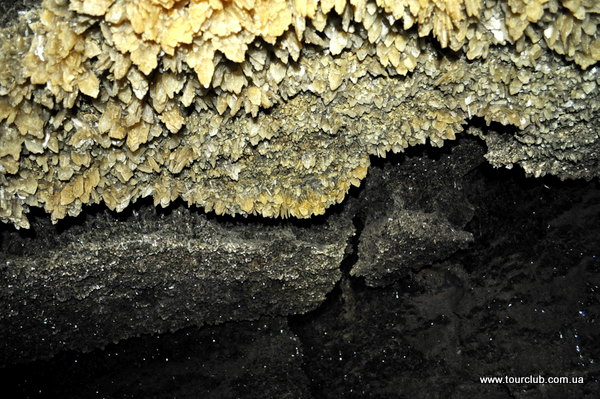
In the nearby maze, loam bottom is covered with calcytcalcite influxes - dark yellow and even green. At the top small crystals (less than 1mm) have formed, they look like a cascade of black velvet.
The excavations of new mazeslasted for more than three years. In 1993, March, 26 was the next success: struck the way to the new area of the cave. That mazes are less littered with loam, and further to the south are clean slit passages without any clay at the bottom, with sharp ridges of crystals and root gypsum. The majority of walls is covered with crystals, especially, the lower part. Crystals are small, dark and transparent, indicating the existence of oxides of manganese in the cave. The main part of the maze is covered with dark crystals, sometimes walls and ceiling of the passes are totaly dark of it.
At the crosses of passages, where the sharp rocky breeds are overhangigng, outgrowths of crystals are much bigger and has various colours- from dark transparent to milky white - and grow over the entire height of cracks. The crusts of small white crystals (2...3cm) enrich the collection of the cave.
The culmination of the crystal gallery is a hall "Crystalic". The walls of the hall to the very top (it has 6m high) are covered with large crystals. The size, colours and the amount of crystals are amazing. Transparent, white-yellow, sometimes red they overhang from everywhere.
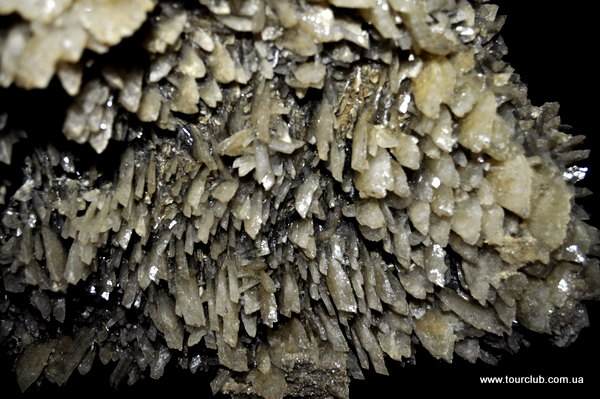
Small stalactites and heliktyty were found in the cave. At the bottom, where the water was dripping the wells of calcite were formed. Some of them get dry and lie like a crust. Sometimes the clay bottom is covered with white crystals, but mostly it is covered with clay layer. The action of water effected everywhre, providing the maze with pretty amazing forms. The passages are mostly not high, some are 5...6m high and 0,2...2m wide. A lot of passages are slittered with laom to the very top. New areas can be discovered excavating such low passages. The cave is continued to the west. Judging from its position in 18-meters wide layer of gypsum, that stretches along the Dniester to the west for several kilometers, the increasing of the caves teritory can be expected. The time and painstaking work will show how can it delight and surprise in future.
The topographic mapping showed that the length of the cave is 2000m now, and it's area is 1970 m2 , volume - 3255 m3.
To save the pristine beauty of the cave, the door was mounted to one of its entrance.
Ploshchanskyy P., speleoclub "Cascade"
Kostryzhivka
"USA Journal" n. 3(8), 1999
